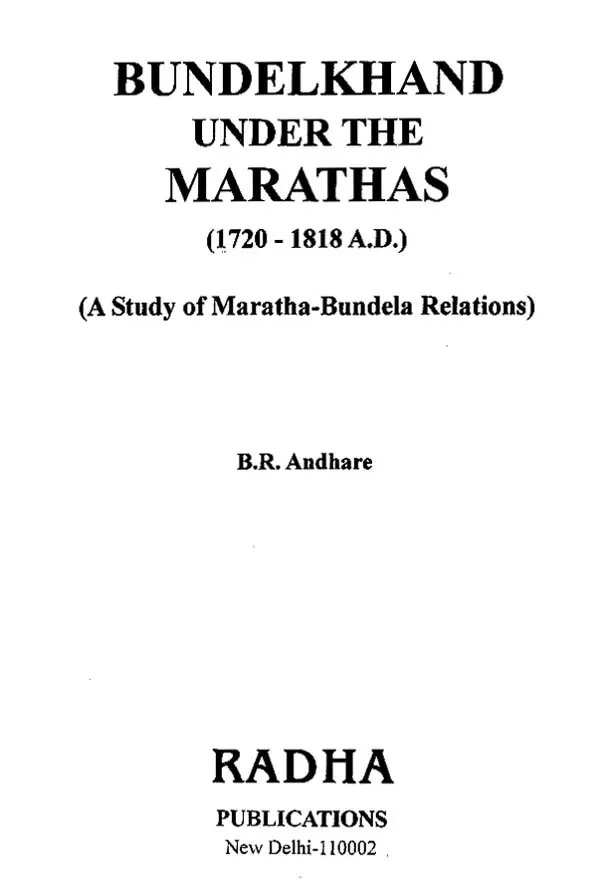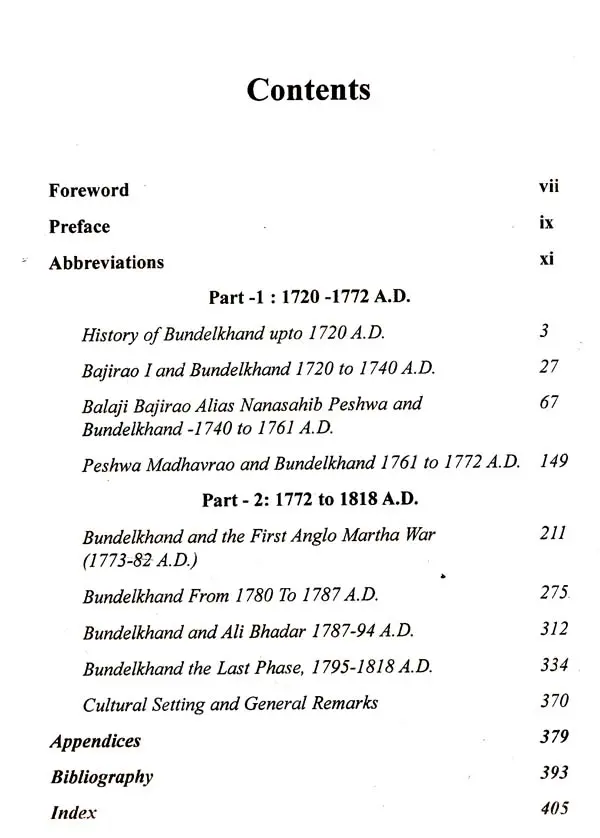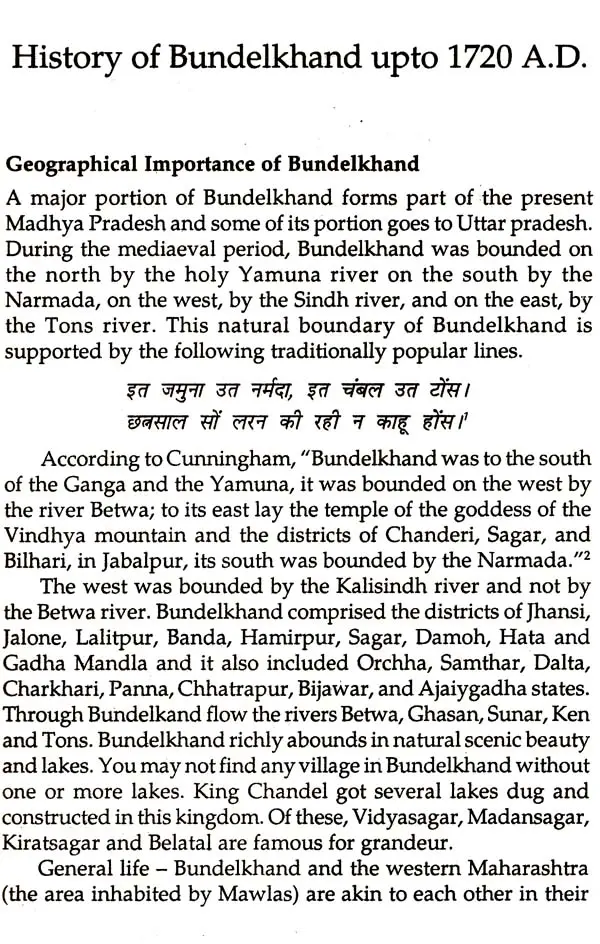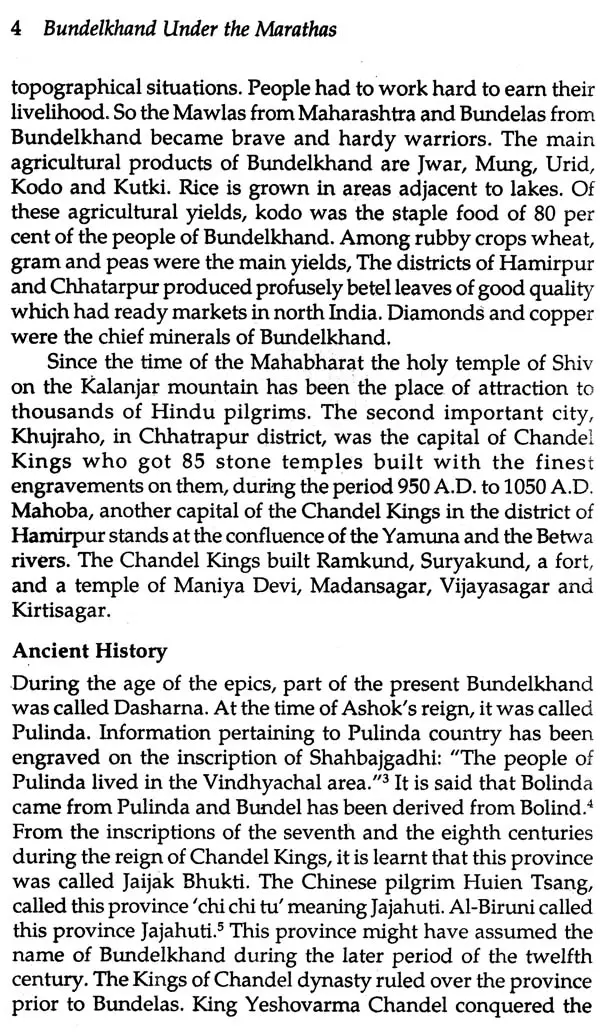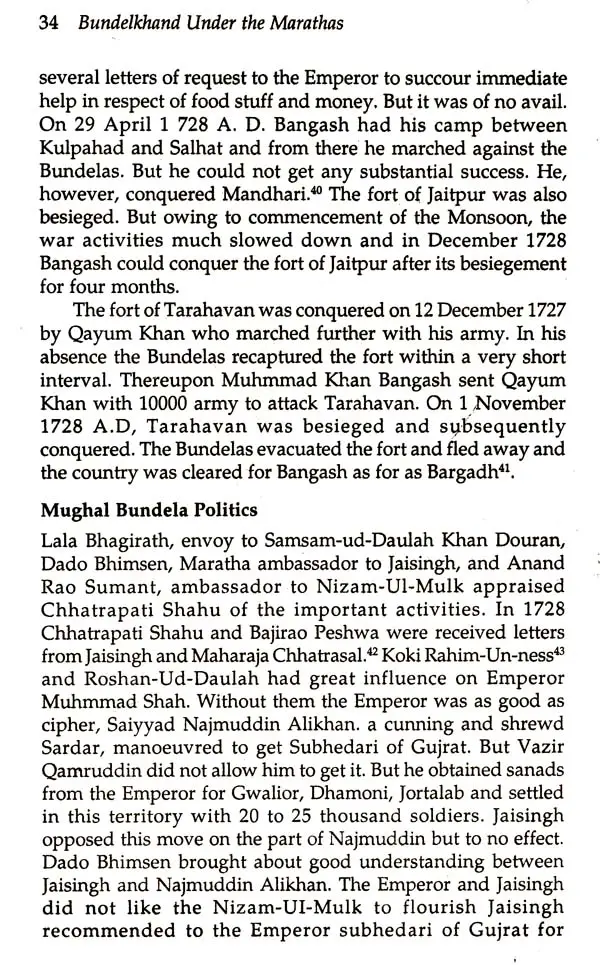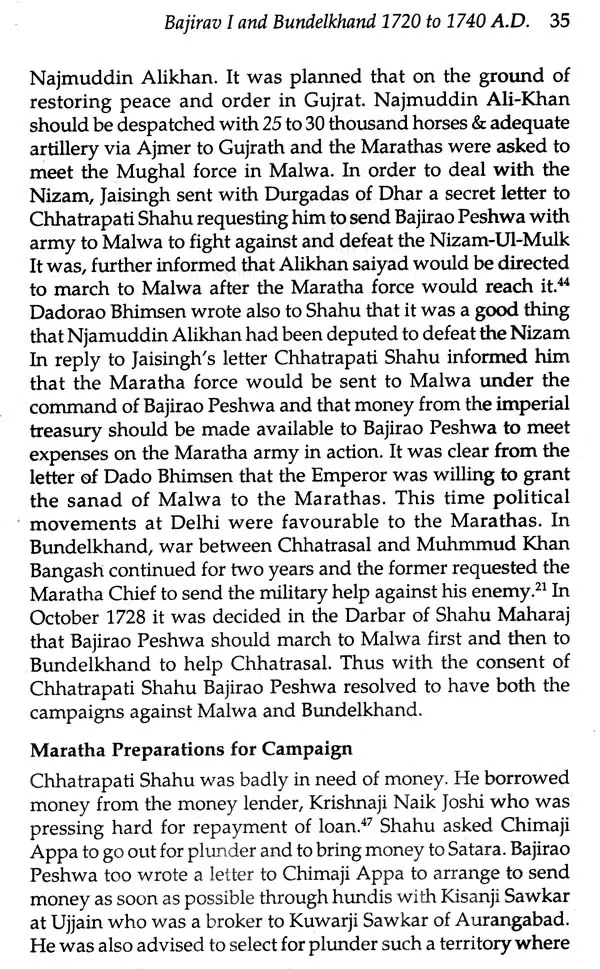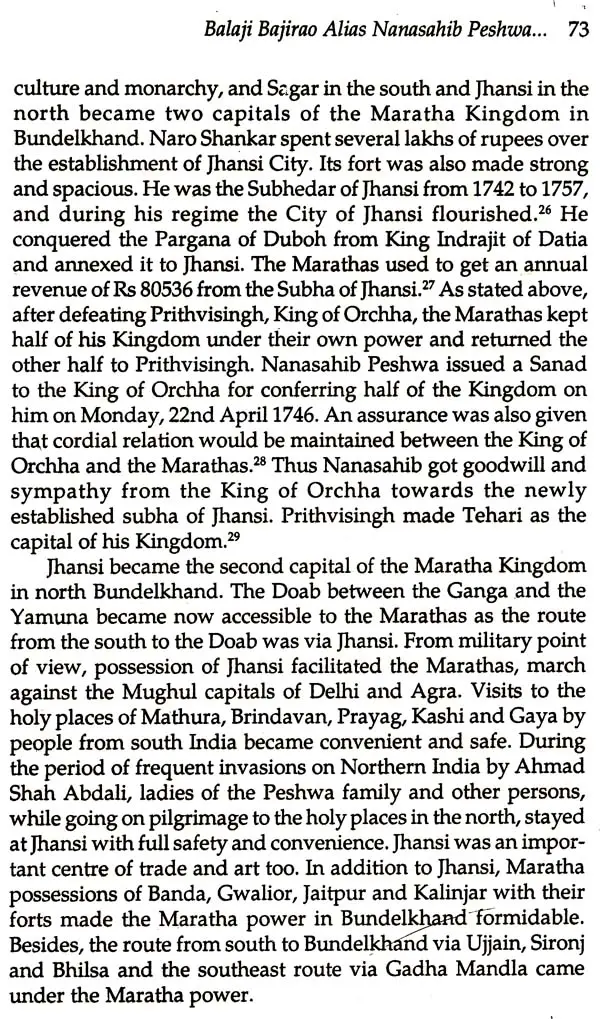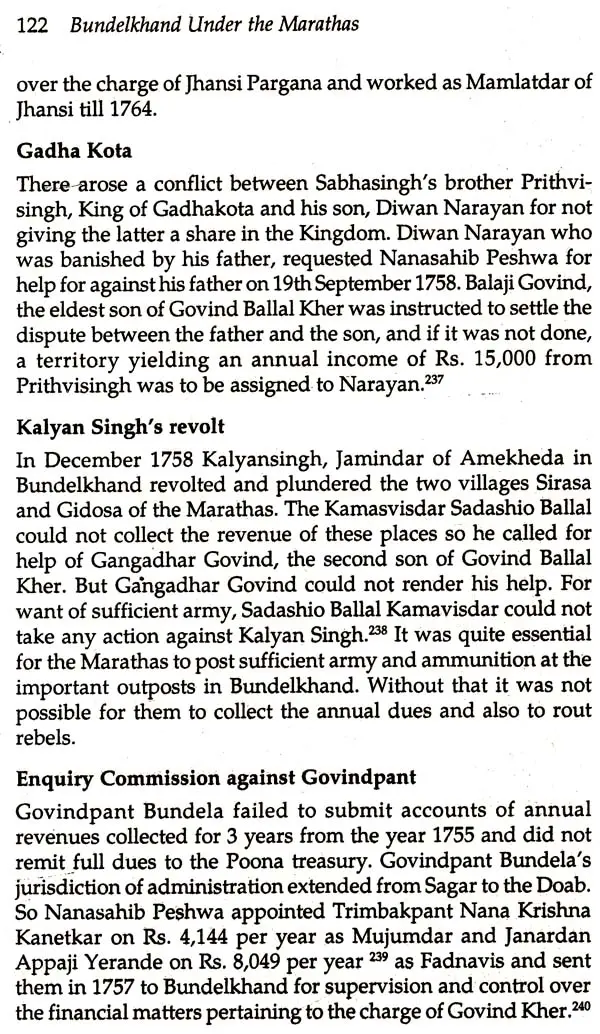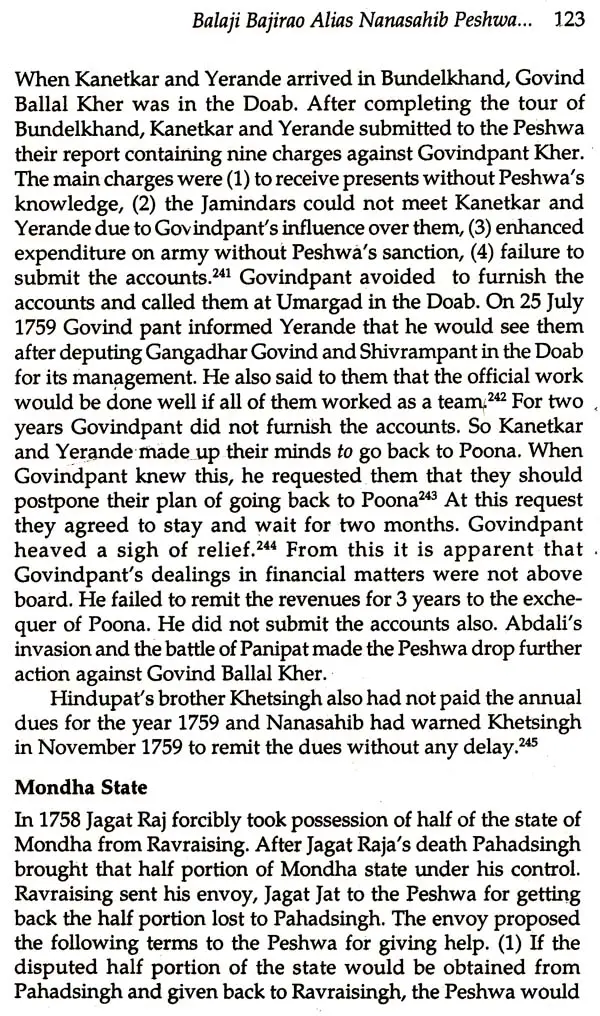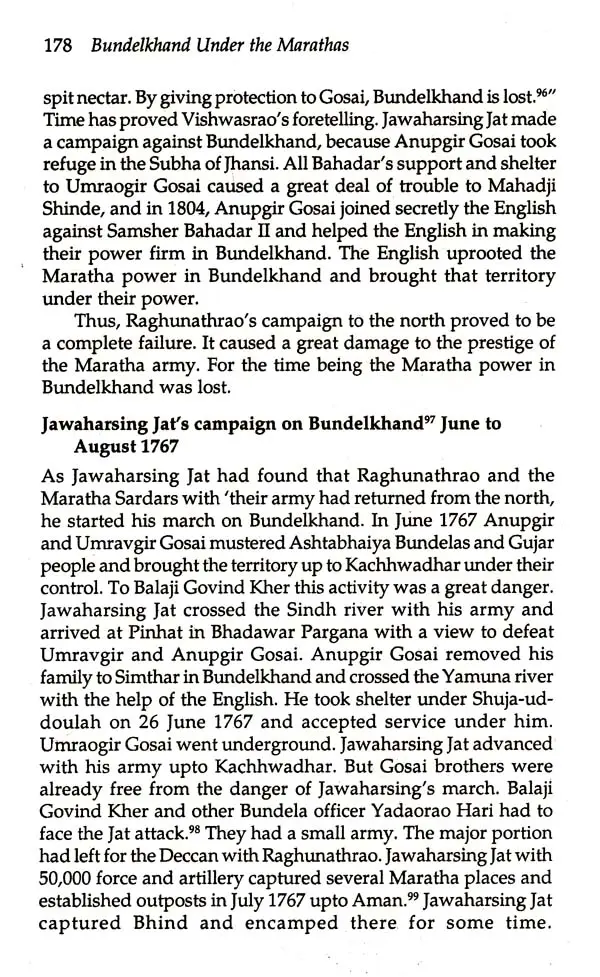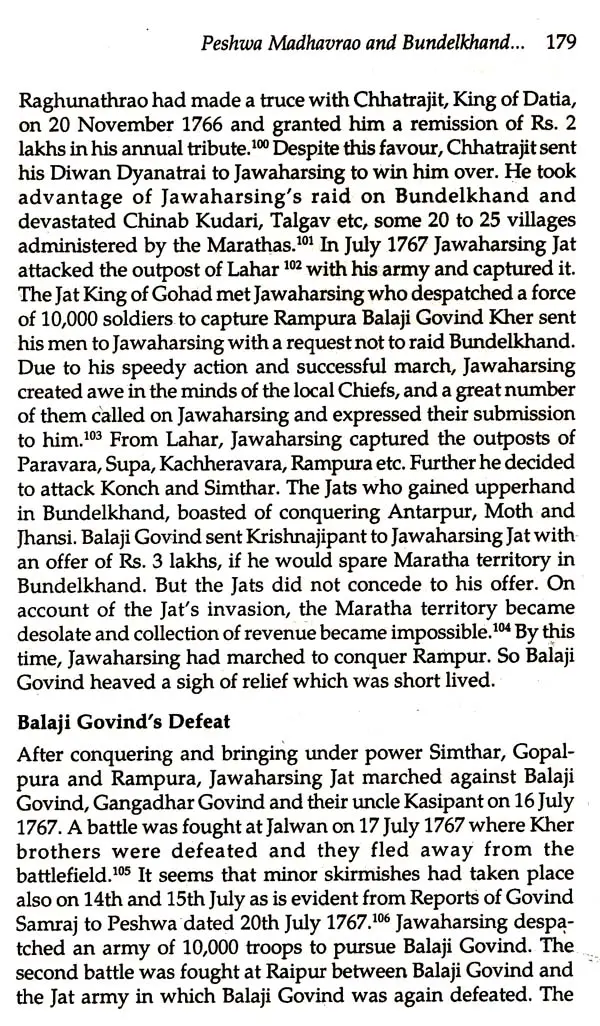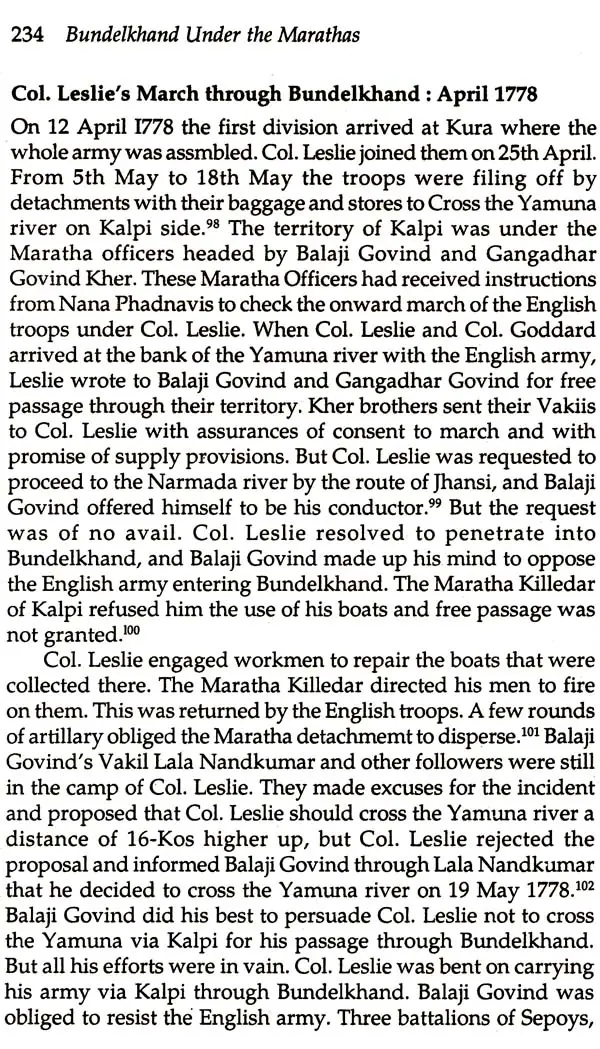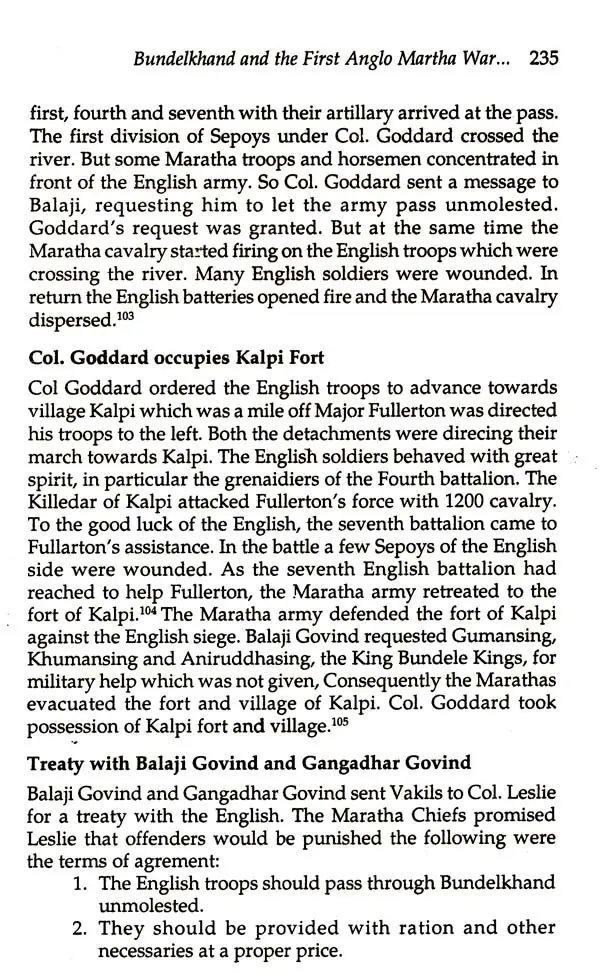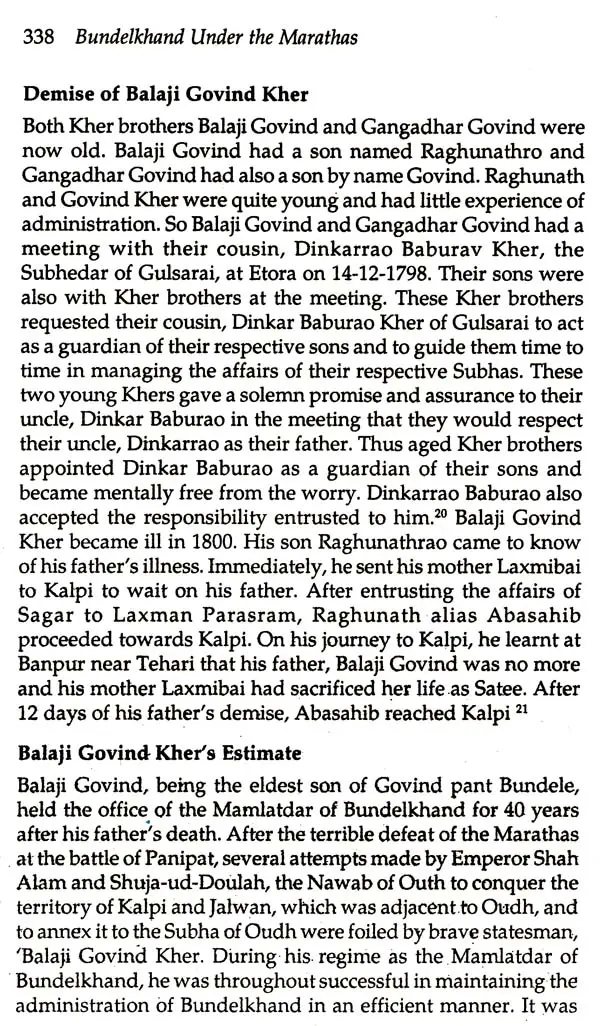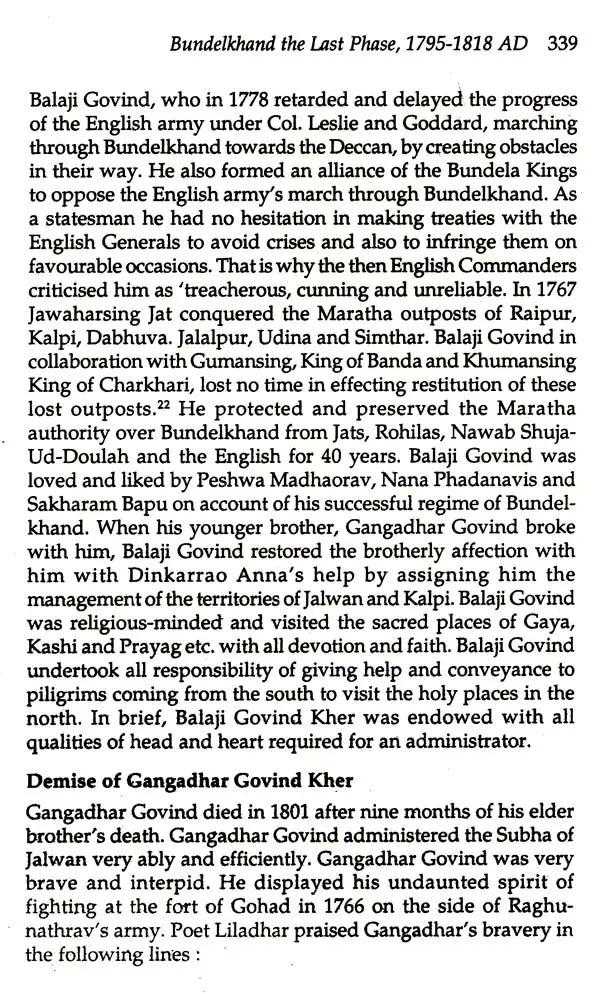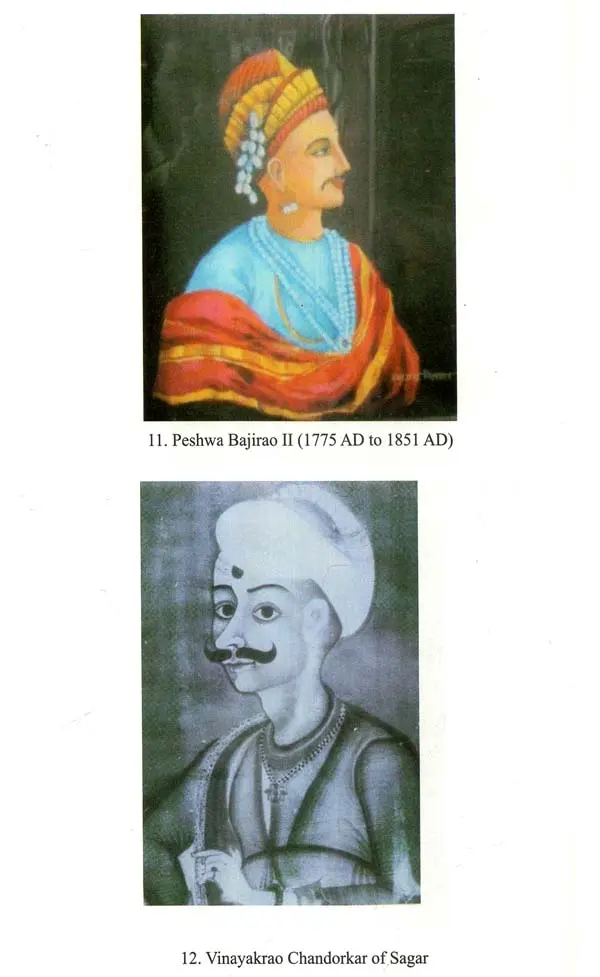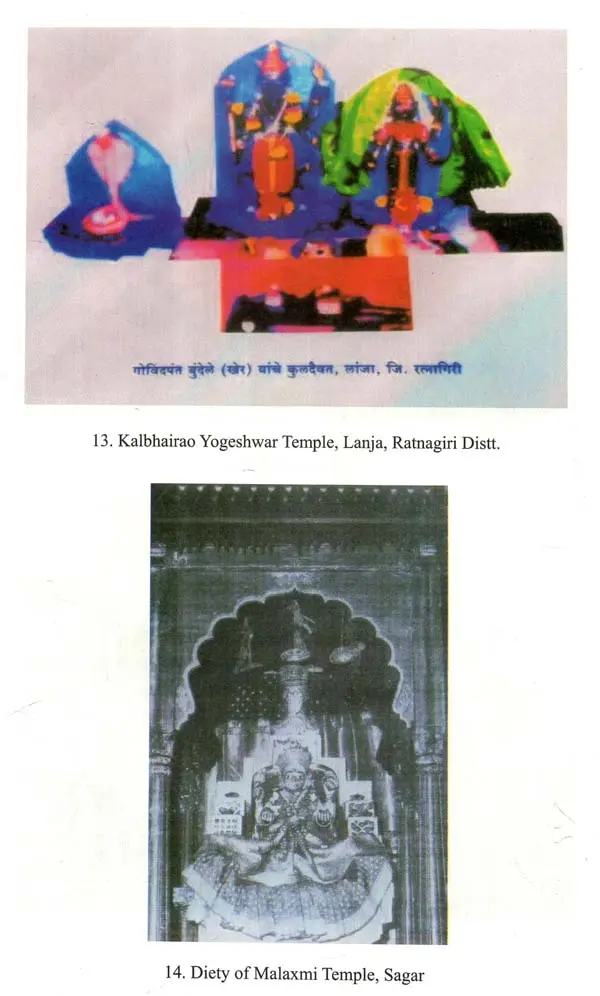
Bundelkhand Under The Marathas- A Study of Maratha-Bundela Relations (1720-1818 A.D)
Book Specification
| Item Code: | UAI248 |
| Author: | B. R. Andhare |
| Publisher: | Radha Publications, Delhi |
| Language: | English |
| Edition: | 2017 |
| ISBN: | 9789386439192 |
| Pages: | 412 (16 Color Illustrations) |
| Cover: | HARDCOVER |
| Other Details | 9.00 X 6.00 inch |
| Weight | 590 gm |
Book Description
he available accounts of Datia and Orchha lack reference to Maratha officers. Facts given in this books bring out how the Marathas helped these states in their difficult times. The book places before the scholars for the first time the significant achievements of Maratha rulers: Govindpant Kher (Bundele), his two sons Balaji and Gagadhar, Visaji Govind Chandorkar, Naro Shankar Dani, Raghunath Hari Newalkar, Ali Bahadur (Grandson of Peshwa Bajirao I) and his son Samsher Bahadur II, the two able commanders Dingankar and Khanderao Han played important part in contemporary politics, both administratively and strategically.
It is known that Chhatrasal bequeathed one third of his territory to Peshwa Bajirao I out of gratitude and love for him, when his kingdom was saved from Mohammad Khan Bangash by Peshwa Bajira I. However the Peshwas had to put in long efforts to get actual possession. Facts in this connection given here make interesting reading.
The book also provides much cultural information about 18th century life, building up of cities, construction of temples and in general the rise of Greater Maharashtra. The several chapters bristle with interesting information culled from unpublished original documents, which redounds to the credit of the author.
The work provides a detailed study of the outstanding achievements of many Maratha families like Shindes, Holkars Pawars, Bhosales, Khers, Chandorkars, Dingankars, Newalkars and the like, who sincerely helped the Peshwa in maintaining power and prestige of the Marathas in that part of the country.
It is for the first time that we come to know the fact that though Chhatrasal had given one-third of his-kingdom to Bajirao I as a gift, it took Bajirao and his son Nanasahib pretty long time to obtain actual possession of the territory.
While paying glowing tributes to Maharashtrians who rendered signal service to the Peshwa in the realisation of his ambitions dream of Hindupadpadshahi, the writer has not failed to point out the treacherous part played by Ganesh Khandekar, who went to Bundelkhand as an agent of the Peshwa and openly joined Peshwa's enemy Shuja Ud Daula and helped him in the conquest of Kalpi.
It is for the first time that full facts of the important part played by Khers and others in connection with the Ist Anglo-Maratha war have been brought to light. Warren Hastings and the Supreme Council of Calcutta expected that the English battalions would go through Bundelkhand and complete their march in eight days, but actually it took them seven months to do so.
Allegations against the Marathas can safely be set aside, if the relationship between the Marathas and the Bundelas is taken in to consideration. Their friendly relations, a sense of duty to protect the Bundelas from, not only outside aggressors but also from, internal tussles and a keenness to protect the interests of India as a whole against the foreigners form the key-note of the happenings during the 18th century. The Marathas were loyal and kept their word given to Bundel Kesari king Chhatrasal, These remarks are not meant here in justification of this or that view, but only reflect an overall impression of that portion of history which is treated here as an objective study. Political matters during this period were of supreme importance; never the less the cultural aspect of the activities of the contemporary leaders was as much meaningful. An effort has been made to bring out the relevance of all such matters pertaining to the general life during the period. Considering that a good number of many facts and their underlying significance have been brought to light here for the first time, this book may rightfully fill an important gap in the history of Central India during a turbulent period.
Book's Contents and Sample Pages
